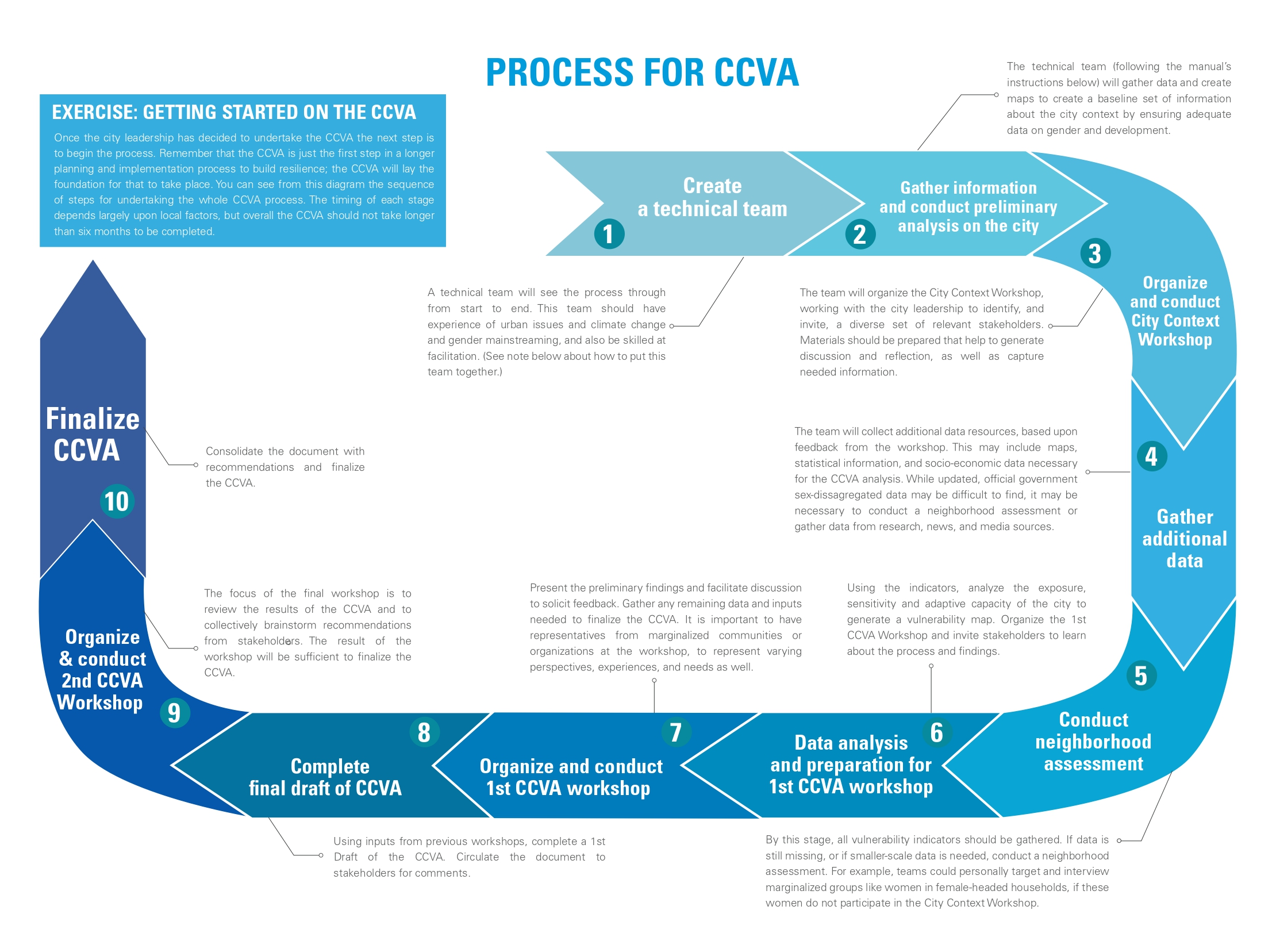Manual for Gender-Responsive Climate Change Vulnerability Assessment
The Manual for Gender-Responsive Climate Change Vulnerability Assessment provides a set of practical tools to identify a city’s vulnerabilities to climate change that prioritizes and involves vulnerable communities — namely women and poorer, informal communities in rapidly urbanizing areas — in the process. This document also offers educational material to educate readers about the impacts of climate change and urbanization on women.
The manual draws from Kota Kita’s CCVA workshops with vulnerable communities in Kupang, Makassar, and Manado together with UNDP to provide context, data, and examples to show how others can conduct their own CCVA processes effectively that can lead to better adaptation planning and gender-responsive policymaking.
How does this work?
This manual provides step-by-step activities that can be followed by any city, neighborhood, or community looking to conduct a gender-responsive and participatory climate change vulnerability assessment (CCVA) process. The manual can be read straight through, or it can be treated as a toolkit, using the sections most relevant for its reader. While this CCVA process pertains to workshops held in Kupang City, the issues and processes involved are relevant to many other cities in Indonesia. It can be used to provide foundational knowledge of important planning concepts, and as a starting point for interpreting local contexts, issues, and perspectives.
To translate the recommendations from this assessment into a planning document, use the Manual for Urban Climate Risk Management Planning.
Who can use this?
This manual can be used by local governments, civil society organizations, planners, universities, and at-risk communities who seek to evaluate and identify vulnerabilities to climate change in their communities, including gender-specific vulnerabilities, and also build awareness and understanding of these vulnerabilities among relevant stakeholders.

